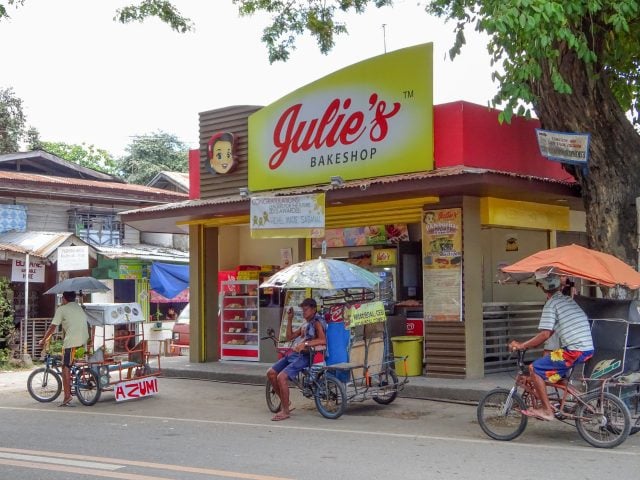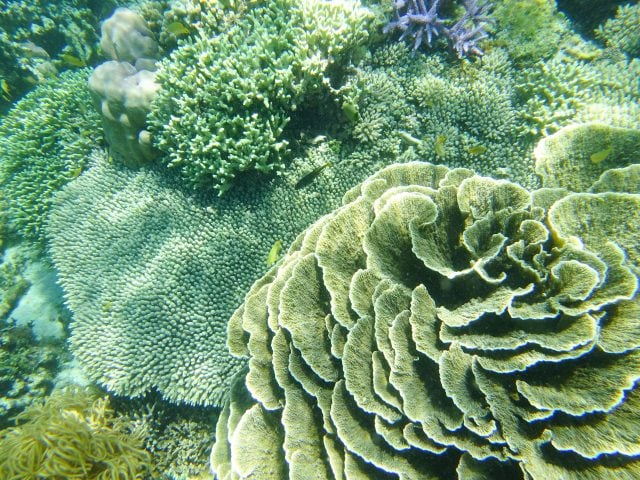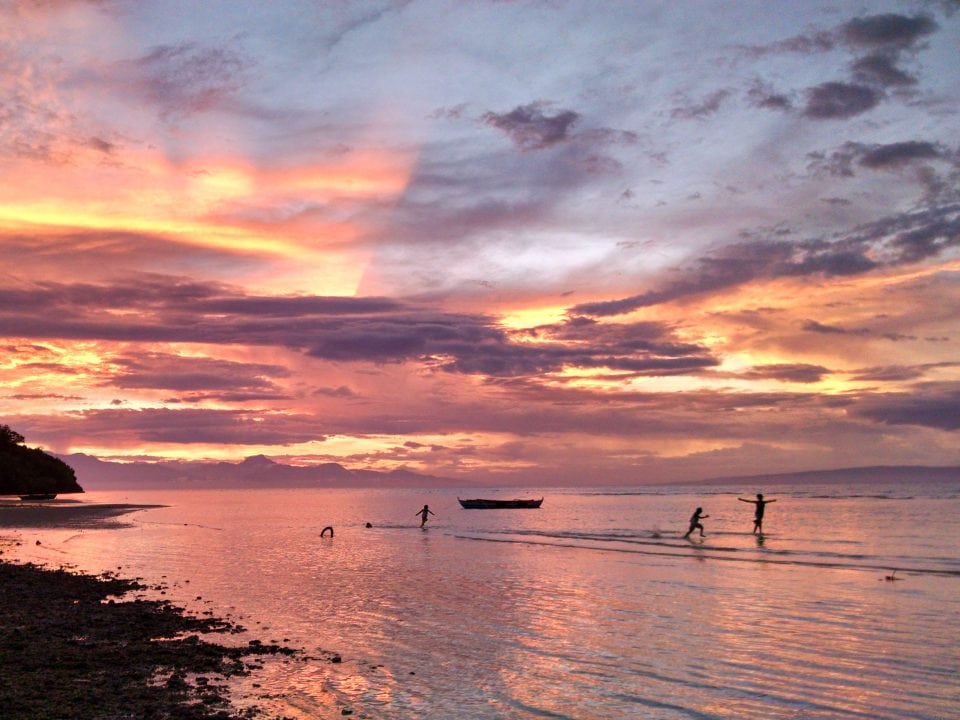The Philippines is a large country with a vast array of islands. We visited only three of them—Cebu, Siquijor, and Negros—in the central region known as the Visayas. So our impressions of the country are based on that area.
- One of the first things that surprised us in the Philippines was hearing what sounded like Spanish all around us. It turns out that more than 300 years as a colony of Spain left their mark on the languages of the Philippines. The main language spoken in the Visayas, Cebuano (also known as Bisaya), is full of Spanish loan words, including the numbers used for money (uno, dos, tres, etc.). That made buying things much easier than in countries where we don’t know how to count.
- Nearly 50 years as a territory of the United States (1898 to 1946)—and the later presence of large U.S. military bases—also affected the Philippines. One of the most obvious signs of U.S. influence is Filipinos’ passion for basketball. Another U.S. import, volleyball, is also popular.

- The Spanish and U.S. cultural influences—and the fact that a large majority of Filipinos identify as Roman Catholic—made the central Philippines seem more like Central America than Southeast Asia. The place it felt the most like to us (of the countries we’ve visited) was Honduras.

- Food in the central Philippines was a mixed bag. There were some dishes we really liked, such as adobo, a tangy stew flavored with vinegar and black pepper. But a lot of the food we encountered was dull, heavy, or fried. It seemed like there was a fried chicken place or a burger joint on every other block. Eating light, healthy meals was often a challenge.
- Another food trend that reminded us of Latin America was the prevalence of bakeries selling a wide range of dry, dense rolls and cookies that (to us) had very little flavor other than being sickly sweet.

- Away from the coast, the countryside of the islands we visited was lush, green, and jungley, reminding us of Laos or Guatemala.

- The coral reefs that we snorkeled had very few fish, compared with reefs we’ve seen elsewhere in Southeast Asia, Australia, or the Caribbean. The fish we did see tended to be very small. The reason may be that the reef waters are heavily fished to provide food for the local population, which reportedly relies on the sea for more than half of its protein. Although fish were scarce, reefs in the Visayas had some of the healthiest-looking, most diverse coral we’ve seen anywhere.

- Getting around the Visayas by vehicle was often a slow, tedious process. Roads were frequently potholed or rutted, traffic in cities like Cebu could be very heavy, and roads through the mountainous terrain wound steeply up and down. (Thank goodness for the crystalized ginger that we always carry to combat motion sickness!)
- Although public buses were fairly modern, all of the ones we could find lacked air conditioning. They were also tightly packed with passengers—four or five to a bench seat that you’d think could fit only two—which made the slow trips feel even hotter and more uncomfortable. But at least they were cheap and didn’t break down.

- For some reason, the central Philippines had some of the most beautiful sunsets we’ve ever seen—not just once in a while, but almost every night. They were a photographer’s dream.
